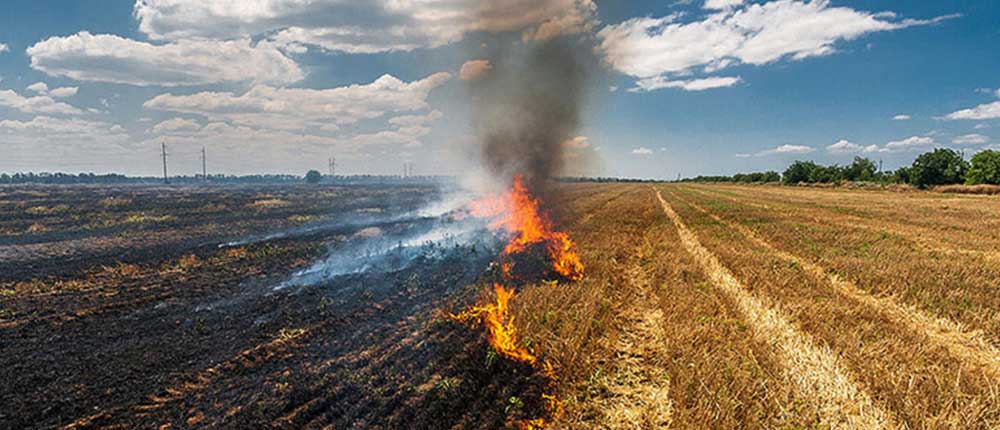‘Most farmers are poor and cannot afford a machine to remove stubbles from fields’.
New Delhi: With winter slowly setting in, the air quality in the national capital has plummeted to the poor category and much of this is being blamed on the stubble burning in the neighbouring states of Punjab and Haryana.
Stubble burning constitutes about 3% to 40% of the bad air quality in Delhi and on Friday, stubble burning contributed 28% of the poor air quality in Delhi.
However, farmers every year burn their stubble which is left behind after harvesting their rice crop. Farmers in the states like Punjab and Haryana take to burning the leftover stubble from the harvested rice crop in order to prepare their fields for the next wheat sowing season which begins from November.
Farmers say that they have no other option, but to set their fields on fire since they have received little or no help from the government. They also claim that most of the farmers are poor and cannot afford a machine to remove these leftover stubbles from the fields.
Bhupinder Singh Mann, president of the Bharatiya Kisan Union (BKU), told The Sunday Guardian that the farmers set their fields on fire since they are helpless.
“If the farmers had received benefit from mechanically cutting these stubbles, why would they have set their fields on fire? They also know that it affects their fields as well as their health. They are helpless, they have no money to buy these big machines. The government just talks and makes big promises, but on the ground, nothing is being done for them. There are thousands of poor farmers, and if the government is serious about handling the issue of stubble burning, they need to come out with a concrete plan,” Mann said.
Asked about the subsidy being provided by the government on machines that helps to cut these leftover stubbles from the rice crop, Mann said, “The subsidy is too little, the government is not paying 100%. Moreover, the price set by the government and the price at which these machines are available in the market are very different. Also, these machines need diesel and a tractor to run, does a poor farmer have so much of money?”
Anumita Roy Chowdhury, programme director at the Centre for Science and Environment (CSE), told The Sunday Guardian that there is a need to have a systemic approach for straw management.
“There needs to be two kinds of solution for managing stubble burning–one is in-situ management of the straws and the second is ex-situ management of the straws where these straws can be used for other purposes. For example, the thermal power plants can take these straws and use as fuel for power generation. The NHAI can take these straws to build roads. We need to add value to these straws and only then would the poor farmer make effort to remove them from the field instead of burning them down,” Roy Chowdhury said.
Environmental experts also say that vehicular pollution contributes a major chunk of the PM 2.5 and PM 10 particulate matter in Delhi’s air, making it difficult and harmful to breathe and Delhi has over one crore active cars plying on the roads of Delhi. Delhi’s air quality since the beginning of October has remained in the “poor” to “very poor” category as the two major pollutants PM 2.5 and PM 10 has increased significantly.

